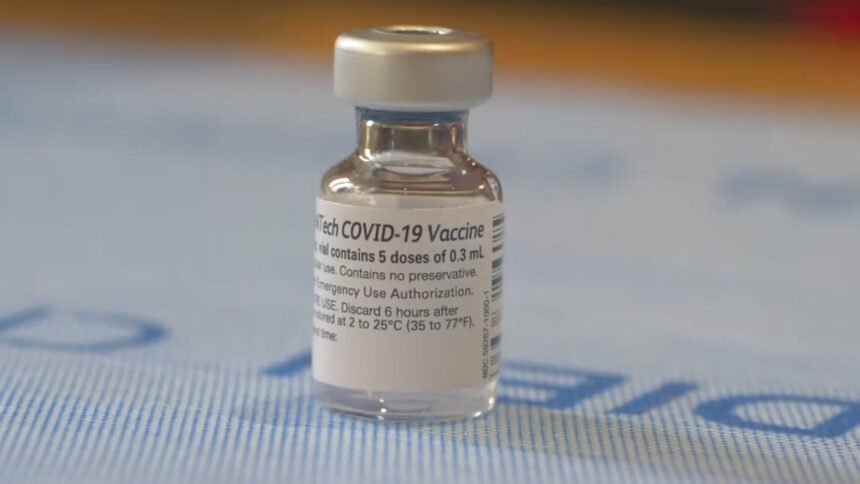California opens scarce vaccines to those 65 and older

SACRAMENTO, Calif. (AP) — California is immediately allowing residents 65 and older to get scarce coronavirus vaccines, Gov. Gavin Newsom announced Wednesday.
Click here for more information on vaccines in Riverside County
The move puts seniors in line before emergency workers, teachers, childcare providers and food and agriculture workers even as counties complain they already don’t have enough doses to go around.
“There is no higher priority than efficiently and equitably distributing these vaccines as quickly as possible to those who face the gravest consequences,” Newsom said in a statement. “To those not yet eligible for vaccines, your turn is coming. We are doing everything we can to bring more vaccine into the state.”
While health care workers and those in nursing homes and other congregate living facilities can still be vaccinated, state officials are expanding the program to those 65 and up because they are at the greatest risk of being hospitalized and dying. Orange County already had said it would swiftly move to vaccinate people 65 and older.
California has seen virus cases and hospitalizations explode since Thanksgiving, though in recent days the numbers have flattened.
It reported another 589 deaths Wednesday, bringing the total to 31,102. It recorded 33,751 new infections, some that will inevitably lead to more hospitalizations and deaths.
“With our hospitals crowded and ICUs full, we need to focus on vaccinating Californians who are at highest risk of becoming hospitalized to alleviate stress on our health care facilities,” said Dr. Tomás Aragón, director of the California Department of Public Health and the state’s Public Health Officer. “Prioritizing individuals age 65 and older will reduce hospitalizations and save lives.”
The moves follows recommendations Tuesday from the U.S. Centers for Disease Control and Prevention. But it comes after members of a state advisory panel on Tuesday worried that adding seniors will inevitably delay vaccines for others.
Anthony Wright, executive director of the consumer health care advocacy group Health Access California, said he generally favored moving toward vaccinating older residents, but he was among those who said the expansion could further strain the state’s already delayed rollout of scarce vaccines.
“This is a very tough conversation about trade-offs,” he said.
Adding the aging “does not mean we’re abandoning our commitment” to those already in line for vaccines, the panel’s co-chairwoman, California Surgeon General Dr. Nadine Burke Harris said later. “We are working together to solve multiple challenges at the same time.”
Newsom also announced a new system to let people know if they are eligible to receive a vaccine, to start next week.
If residents are not yet eligible, the system will allow them to register for a text or email notification when they are.
A “second phase” of that system will help counties and cities that have begun mass inoculation centers at sports stadiums and fairgrounds by allowing eligible members of the public to schedule their appointments at mass vaccination events.
Newsom set a goal last week of delivering an additional 1 million doses by Friday, beyond the roughly 480,000 that had been administered by last week. That’s still a small portion of what’s needed for herd immunity in the state of nearly 40 million people.
Despite its difficulties, the state on Tuesday lifted its stay-at-home order for 13 northern counties in the greater Sacramento region with improving hospital conditions. The region includes El Dorado County, home to Lake Tahoe, a tourism hot spot that drew large holiday crowds despite restrictions.
However, three of five state regions — the San Francisco Bay Area, the San Joaquin Valley and Southern California — remain under the stay-at-home order because their hospitals’ intensive care capacity is severely limited.
The order bans gatherings outside a household and restricts many businesses. With virus cases and hospitalizations more stable, the Sacramento region can resume outdoor dining and worship services, reopen hair and nail salons and other businesses, and increase capacity at retailers. Gatherings up to three households are allowed.
Newly reported cases over the last seven days in the nation’s most populous state have far outpaced others, such as Texas and Florida — the second- and third-most populated U.S. states. However, for the past seven days, California’s average daily rate of new cases per 100,000 people lags behind Arizona and Rhode Island and ties with Oklahoma.
___
Associated Press writers Janie Har in San Francisco, Amy Taxin in Orange County, and Don Thompson and Adam Beam in Sacramento contributed.



